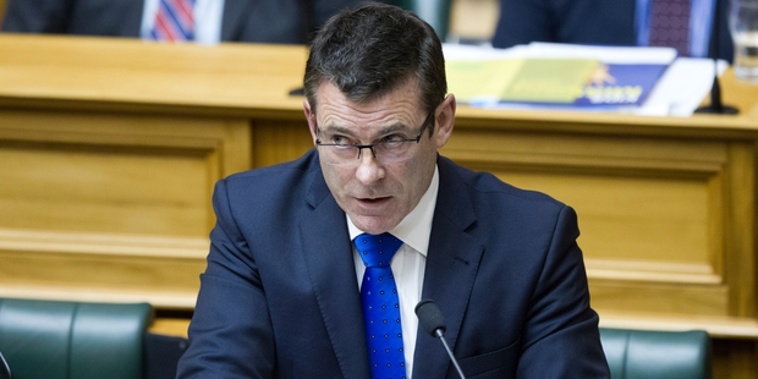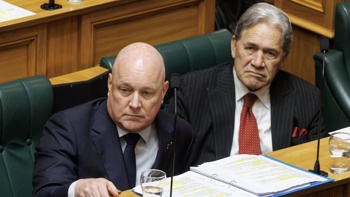
Remuneration thresholds for permanent and temporary skilled migrants will be introduced along with a one-off pathway to residence for lower-skilled migrants already in the South Island.
Immigration Minister Michael Woodhouse announced the changes today, saying they are aimed at increasing the quality of people coming to New Zealand, rather than reducing the number.
New Zealand First leader Winston Peters immediately attacked the policy as "tinkering" and "just a dog whistle to show they're doing something".
SEE ALSO: Govt announcing changes to 'better control' immigration flows
Two remuneration thresholds will be introduced.
- One will be set at the New Zealand median income - about $49,000 per year. Anyone earning less will no longer be classified as highly-skilled, and permanent residence applications will no longer be able to claim points for jobs that are paid below the median income.
- The other threshold will be set at 1.5 times the New Zealand median income of $73,299 a year for jobs that are not currently considered skilled but are well paid. Anyone earning more will automatically be classified as highly skilled.
Permanent residence applicants will be allowed to claim points for jobs that are not currently considered skilled, but are paid above the higher threshold.
"Introducing these thresholds is about creating a balance - a balance between ensuring employers can meet genuine labour shortages by using people from overseas, while at the same time ensuring those lower skilled migrants are coming here with a clear understanding of their visa conditions," Woodhouse said.
"In fact, there will be some workers who are now likely to be eligible for residence for the first time such as outdoor adventure instructors, heavy machinery operators and experienced workers in the construction and oil and gas industry."
LISTEN: Cameron Bagrie: Govt set to announce immigration changes
Woodhouse said the SMC points table, under which individuals claim points towards their residence application, will also be realigned to "put more emphasis on characteristics associated with better outcomes for migrants".
Other changes to temporary migration settings include:
- A new maximum duration of three years for lower-skilled and lower-paid Essential Skills visa holders, after which a minimum stand-down period will apply before they can get another lower-skilled temporary work visa.
- Toughening up requirements for the partners and children of these visa holders. They can currently obtain work visas and student visas allowing them to attend school in New Zealand as domestic students. Under the changes, partners and children will be classified as visitors and only gain a work visa if they meet visa requirements in their own right.
- Ensuring the length of the visa in seasonal occupations aligns with peak labour demand, rather than for twelve months as is presently the case.
LISTEN: June Ranson: Many migrants will welcome changes to visa rules
Finally, Woodhouse said about 4000 migrant workers and their families who have lived in the South Island for more than five years will be given a one-off pathway to residence.
New Zealand First leader Winston Peters, who has long called for a significant cut to migration, said today's changes were more "tweaking" and "just a dog whistle to show they're doing something".
"But in reality it's a callous attempt to hold onto power. They are taking note of their polls and realise Kiwis have had enough of the country being flooded with unskilled foreign workers.
"They are fiddling with the issue while the plain fact is foreign workers will still be able to come here when employers claim they can't get Kiwis. We have 139,000 Kiwis out of work and many are desperate to get a job."
Record migration, which is underpinning New Zealand's economic growth and putting pressure on infrastructure, has shown no sign of letting up.
In the year to February, net migration rose to a record 71,333, of which 57,156 were bound for Auckland.
Immigration has become a key election issue with opposition parties promising to reduce new arrivals because of the effect on house prices and pressure on key infrastructure including roading, schools and hospitals.
The Government has argued strong immigration flows are a measure of the country's success and contribute positively to the wider economy.
However, in October Woodhouse announced changes that meant those coming to New Zealand under the skilled migrant category would need 160 points before getting residency, rather than 140.
The number of people allowed entry under the family category was also more than halved, and a temporary ban on applications under the parent category was also announced.
This week Australian Prime Minister Malcolm Turnbull announced an end to a visa programme for skilled migrants, as part of a bid to tackle unemployment. Turnbull said jobs had to go to Australians first, before businesses could consider hiring foreign workers.
And United States President Donald Trump this week signed a "buy American, hire American" executive order targeting the H-1B visa scheme that is particularly used by the tech sector.
Take your Radio, Podcasts and Music with you









